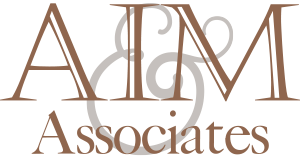Where things became a bit confusing was in the Committee’s Summary of Economic Projections that showed the Fed expected to raise rates two more times by the end of this year because inflation is still elevated. If you missed it, the press conference amounted to Chairman Powell explaining the decision not to raise rates while at the same time explaining the Committee believes two more rate hikes are likely needed before year-end.
Huh?
If the Fed believes inflation is still a problem and the labor market is extraordinarily strong, why not hike at this meeting? Why hit the pause button and then jawbone about more hikes later in the year? Let’s look at two of the more likely scenarios to answer this question:
1. The Fed believes they have engineered the coveted soft landing and there is little chance of a recession. In this case, the current rate environment is sufficiently restrictive to cool inflation without gutting the labor market. Growth will be slow to moderate but will continue until such time the Fed can take their foot off the brake and facilitate the next economic revival.
2. The Fed is conflicted and therefore cautious. They believe inflation is still a problem and the labor market still strong which provides more room for hikes, if needed. But, right now, they’re not entirely confident in knowing what the full economic impact and outcomes will be from this tightening cycle. This all adds up to the Fed wanting to control expectations. They want to maintain a hawkish message without having to actually tighten conditions even more. In other words, do as I say (expect more rate hikes), not as I do (expect they are done raising rates).
Which one is it? In our opinion, it’s the second scenario.
The truth is, if the Fed thought inflation was still as big a problem as ever and the labor market was still extraordinarily strong then they would’ve raised rates at this meeting. There is no benefit to waiting for more hikes if inflation is still public enemy number one.
But the Fed didn’t hike and their actions, not words, indicate on balance they are more comfortable with where inflation is and is heading compared to their lack of comfort in assessing the uncertain lags of restrictive monetary policy and tighter credit conditions across the banking system.
Regardless of whether the Fed raises rates again, one thing is known – they are close to the end if June’s pause wasn’t it. But in many respects, at this point in the cycle, it doesn’t matter what the Fed’s forecast is for the terminal rate because the economic data (read health) will now be the arbiter. From here, the weight shifts to the real economy if June’s Fed meeting was any indication.
We’ll switch gears and end this note with a big thank you to our clients, friends and family for all the support and referrals over the years. June marks our 20th anniversary as a firm. We couldn’t have made it this far without you and we look forward to the many years ahead.
